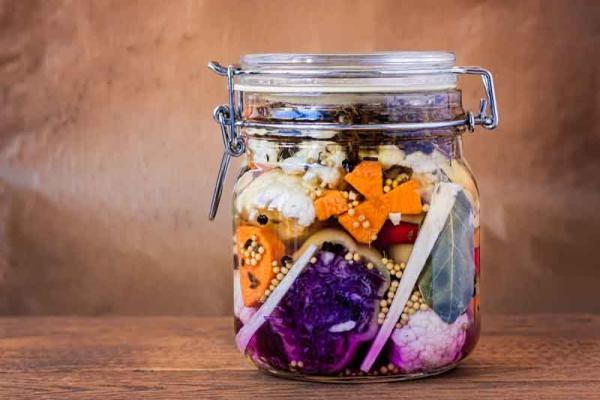Co-op Savings
Current Posts

Fermented Foods for Health
Back in the day, before we had endless selections of colorful, polished vegetables at our fingertips no matter the season and a fridge to toss them into when we got home, food preservation was a constant struggle.
Root cellars could keep some vegetables on the table into the winter season, but eventually the cellar would run dry and fresh vegetables wouldn’t be seen until the following spring. For many cultures, fermentation was the key to healthy eating year round.
Whether it’s sauerkraut, pickled vegetables or kimchi, many regions put their own spin on fermented foods. But most cultures share common fermentation methods as well as the many health benefits, which include a healthy dose of vitamin C, antioxidants and probiotics that are known to support proper digestion.
Fermentation techniques have been around since ancient times, according to Joanne Slavin, Ph.D., a professor in the Department of Food Science and Nutrition at the University of Minnesota.
Initially a process of trial and error to preserve foods and enjoy alcoholic beverages, it worked so well that it became common practice. Not only did it preserve the bounty of the season but also the vitamins needed to prevent some deadly diseases that could come from a lack of vegetables, such as rickets and scurvy.
The Fermentation Process
The thought of bacteria can make people run in the opposite direction and when it involves food, it can be especially cringe worthy. But created and coerced properly, bacteria is the culinary traditionalist’s friend. By using active cultures, or lactic acid bacteria, one can perform what Slavin describes as pure culture fermentations.
“Fermentation occurs when microorganisms convert carbohydrates in foods to alcohol or acids,” Slavin explains in a presentation titled The Health Benefits of Fermented Foods and Drinks. “Nearly all food fermentations are the result of more than one microorganism, either working together or in a sequence, usually growth initiated by bacteria, followed by yeasts, and then molds – smallest to largest.”
The trick is getting the good, beneficial bacteria, mold and yeast to grow, instead of the harmful ones that result in food poisoning. Foods will simply not spoil in an acidic or alcoholic environment, so when fermentation is done properly, preservation occurs as does a tangy flavor.
As our society began placing more importance on fast food culture, many traditions like fermentation left many kitchens. But today, the health benefits of fermentation have revived these old school efforts, with the the sales of fermented drinks like kombucha going through the roof. “Old world fermentation was useful to preserve food when other methods—refrigeration, freezing—were not available,” Slavin says. “Now there’s new interest in the potential health benefits.”
The Health Benefits
Probiotics, or live cultures, found in fermented foods have a long list of health benefits, many of which are tied to increased gastrointestinal and digestive health. Studies have credited fermented foods with reducing the risks of certain types of cancers and serving as an immune system booster.
And probiotics have also been said to help fight colitis, constipation, diarrhea, gas, gastric reflux, heartburn, Crohn’s disease, gum disease, as well as high cholesterol and they have a positive effect on autism and obesity.
Enjoy the unique flavors and health benefits of fermented food and beverages, including Korean kimchi, sauerkraut and pickles (although some supermarket pickles are made with preservatives instead of live cultures, so check the labels), pickled vegetables and kombucha.

 Co-op West Main • Friday-8 am - 9 pm
Co-op West Main • Friday-8 am - 9 pm






